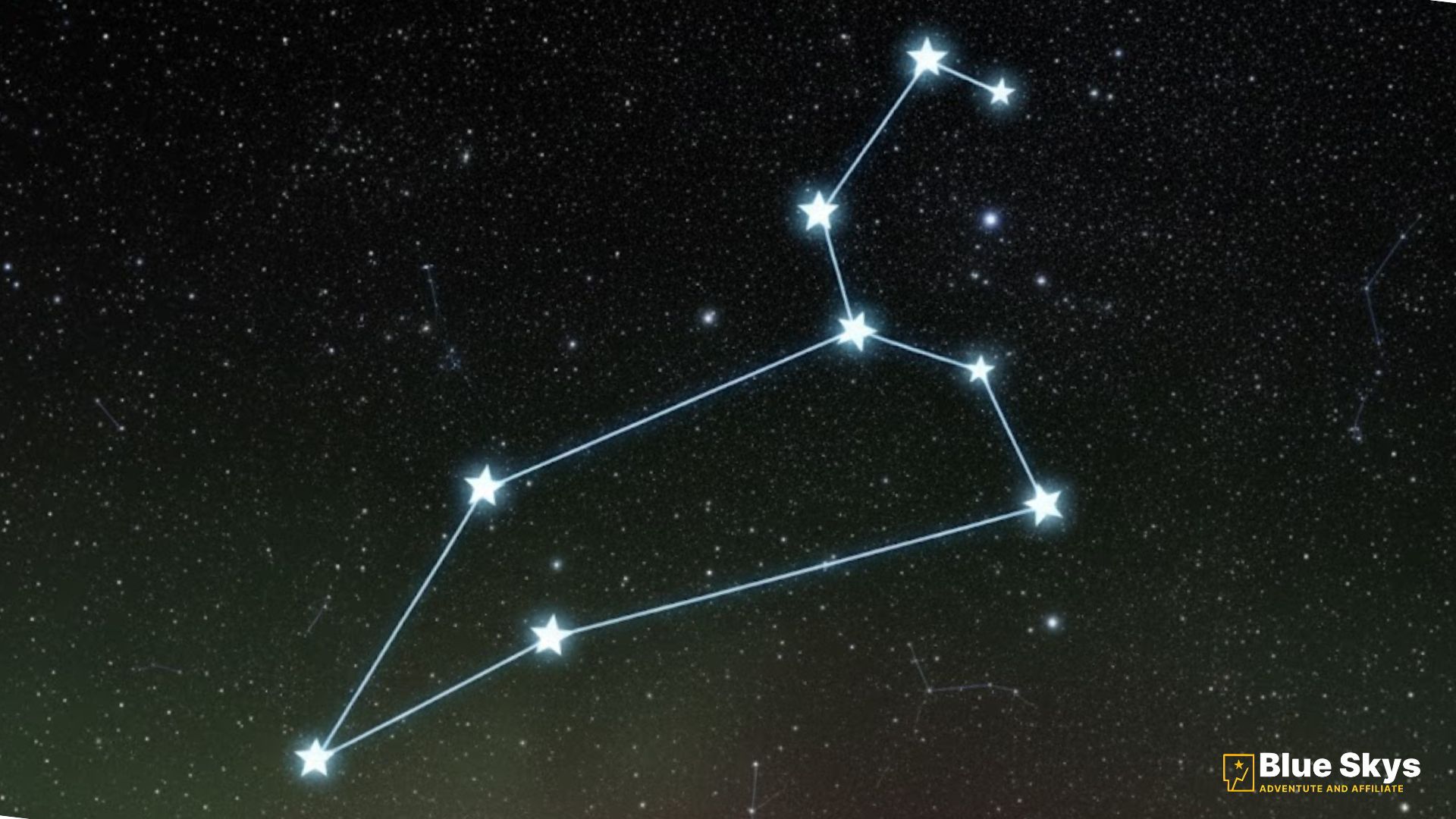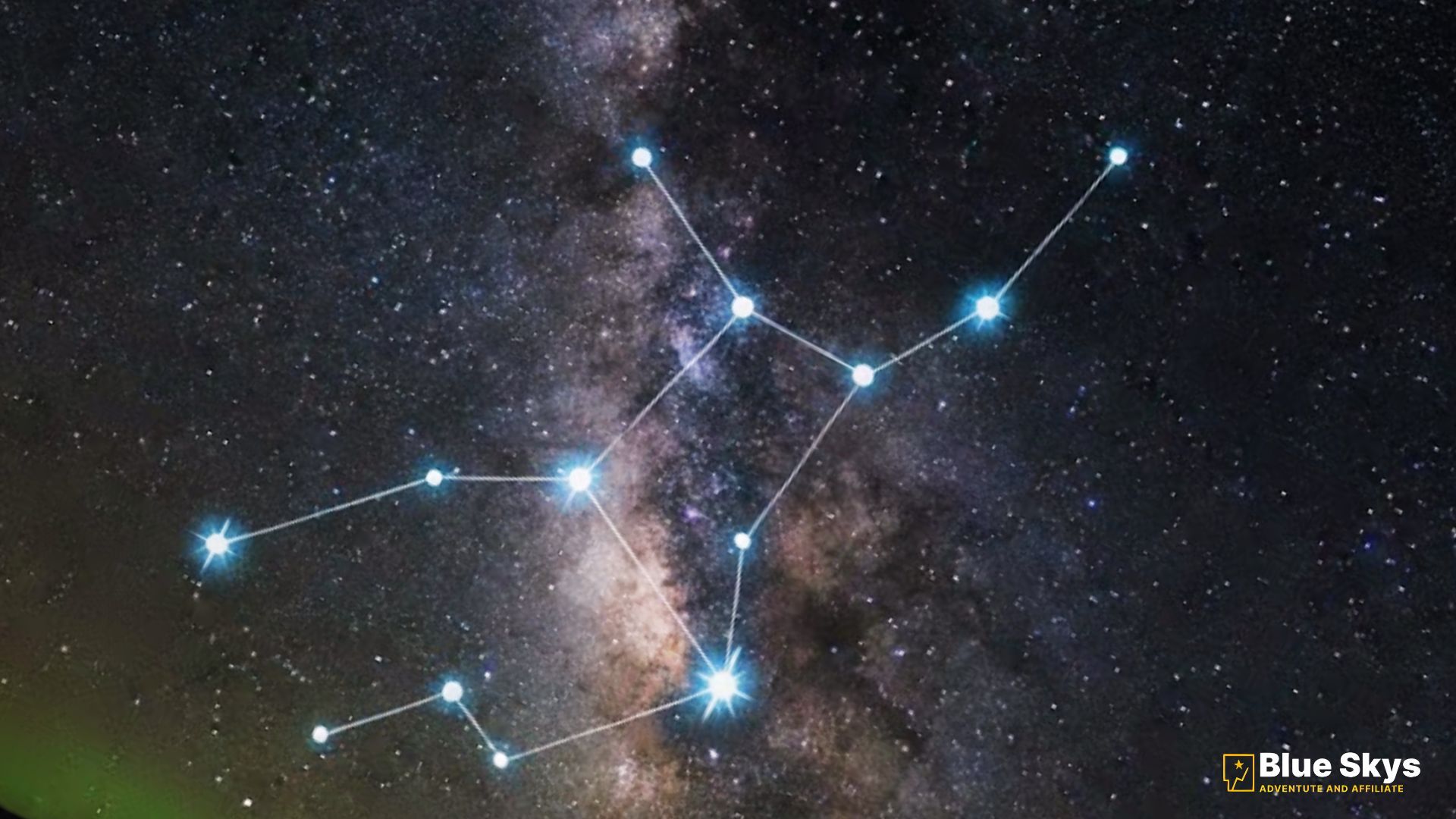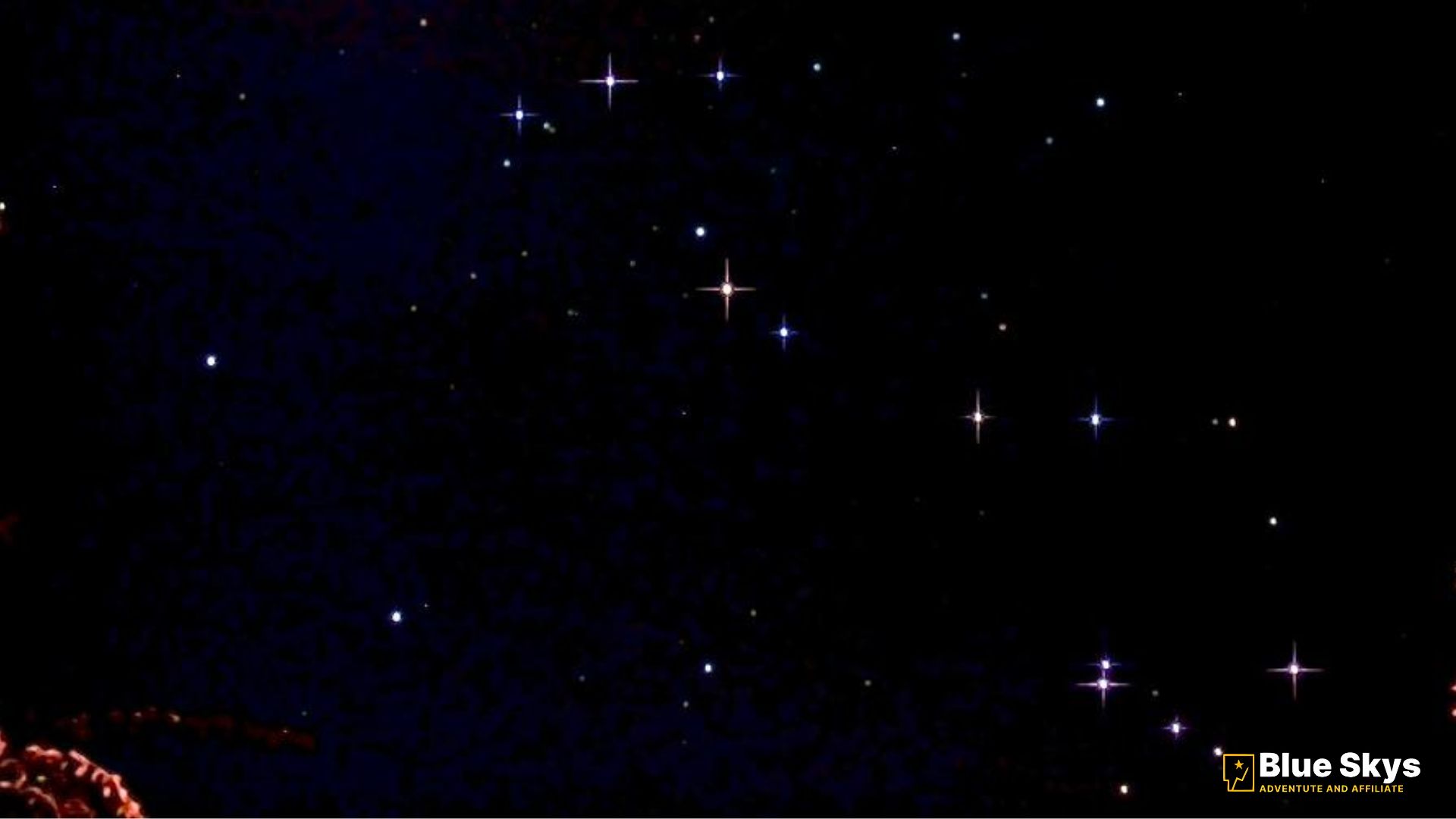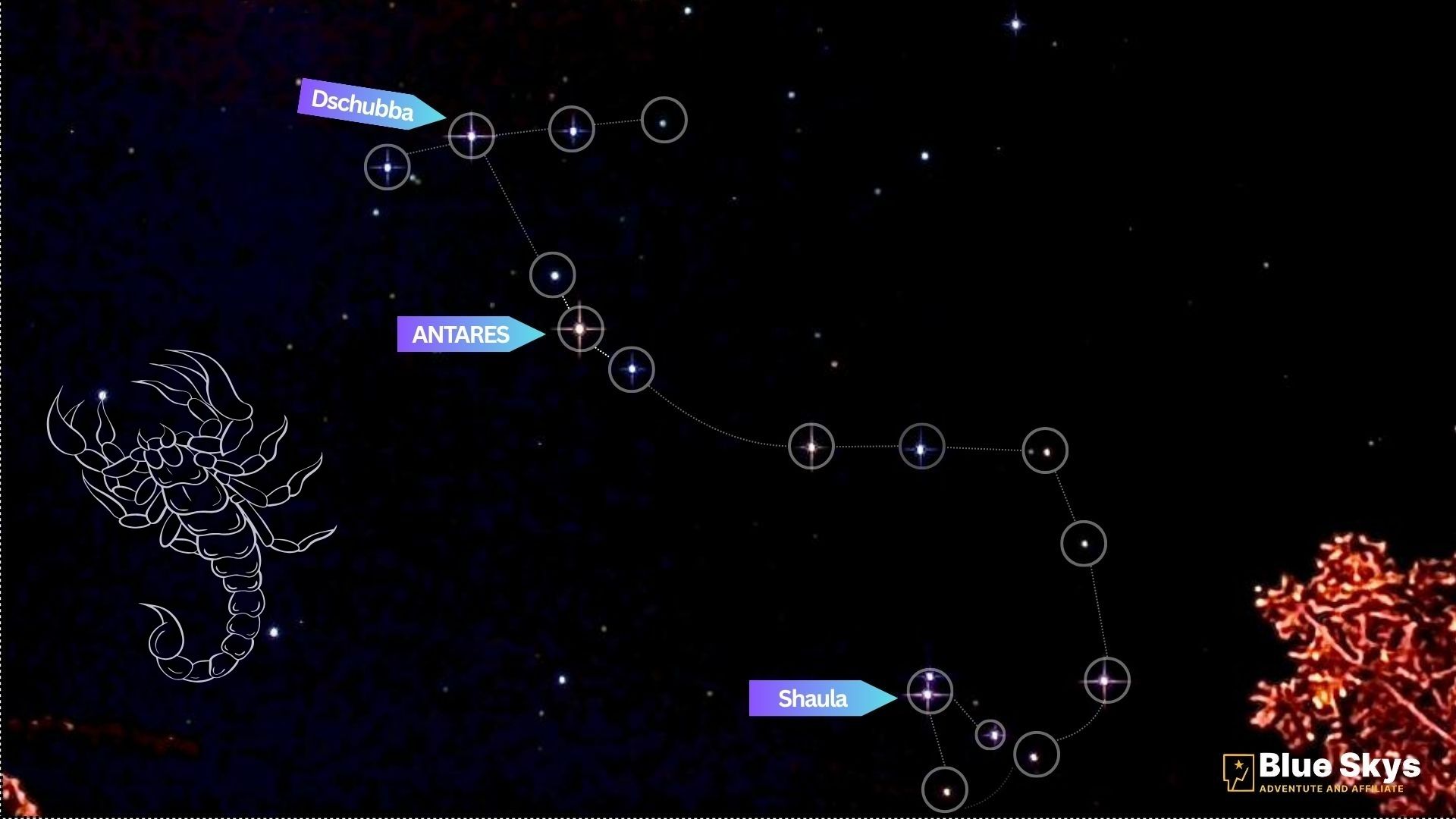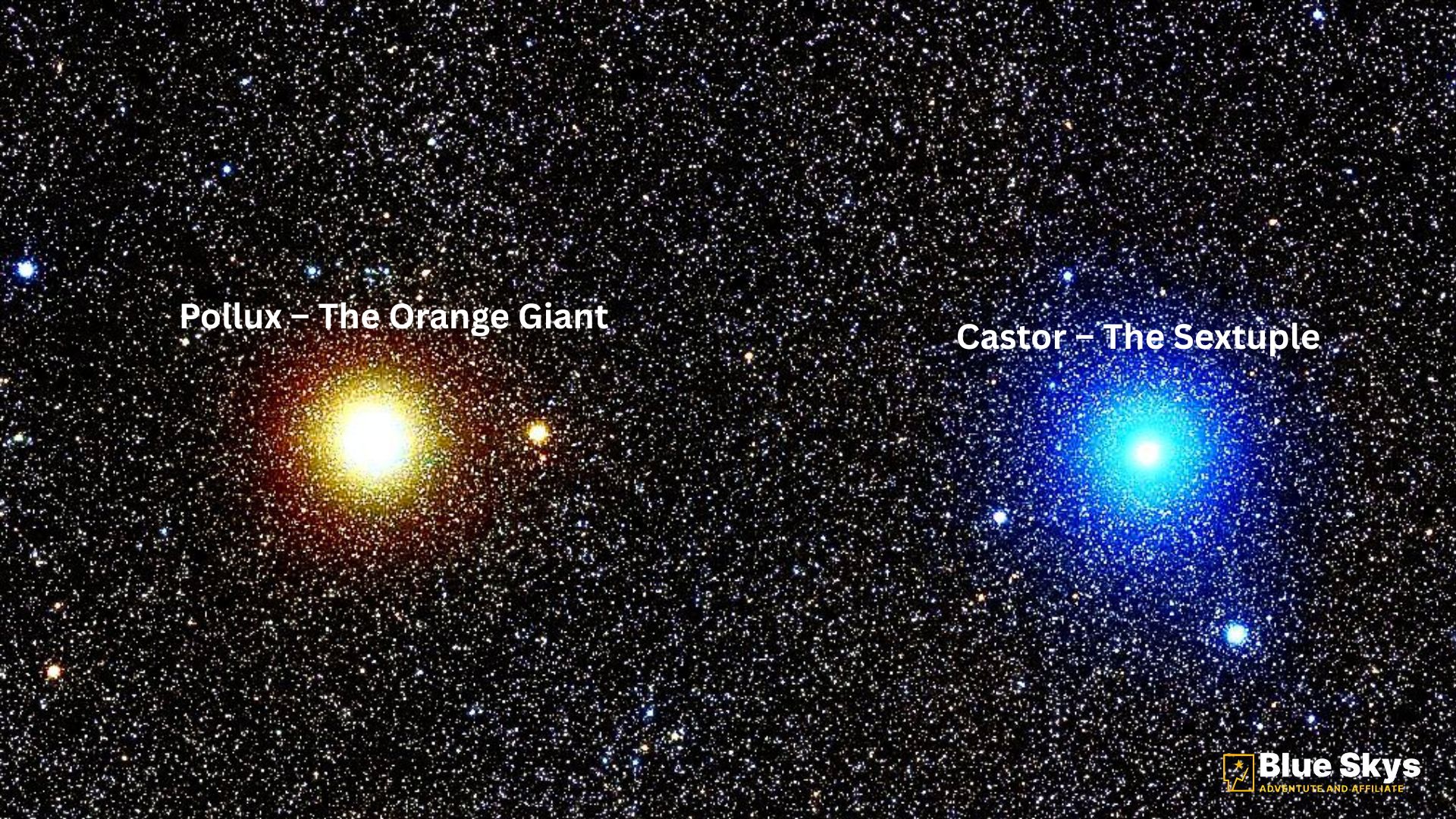What Is the Andromeda Galaxy?
The Andromeda Galaxy, also known as M31 or NGC 224, is the closest spiral galaxy to our Milky Way and the largest member of the Local Group of galaxies. It lies roughly 2.5 million light-years away, shining at an apparent magnitude of 3.4, making it visible even to the naked eye under dark skies.
Stretching more than 220,000 light-years across, Andromeda is about twice the size of our own galaxy. It contains hundreds of billions of stars, along with star-forming regions, globular clusters, and mysterious dark matter halos that scientists are still studying.
How to Find the Andromeda Constellation
The Andromeda Constellation is one of the 48 constellations listed by the Greek astronomer Ptolemy in the 2nd century. It represents Princess Andromeda, who was chained to a rock as a sacrifice to a sea monster before being rescued by Perseus.
Finding Andromeda in the Night Sky
To locate Andromeda, start by identifying Cassiopeia, the “W”-shaped constellation high in the northern sky. From Cassiopeia’s bottom point, trace a diagonal line toward Pegasus, the large square-shaped constellation. Andromeda lies between them.
Look for three bright stars — Alpheratz, Mirach, and Almach — that form a curved chain extending from the Great Square of Pegasus. This chain outlines the Andromeda constellation, and about midway along it, under dark conditions, you may glimpse a faint oval glow — the Andromeda Galaxy itself.
When Is the Best Time to See the Andromeda Galaxy?
The Andromeda Galaxy is best visible from August through February, peaking around October and November for Northern Hemisphere observers. During these months, Andromeda climbs high in the evening sky, far from the horizon haze.
For the United States, UK, Canada, Australia, and New Zealand, the visibility timing differs slightly:
USA & Canada: Best between September and early December, high overhead around 10–11 PM.
UK & Northern Europe: Visible from late summer to mid-winter, clearest around midnight in October.
Australia & NZ: Low on the northern horizon and challenging to view, but visible briefly during early evening in October–November. Due to its highly Northern declination (+41°), observers in the Southern Hemisphere must catch it when it is due north and relatively close to the horizon. It will only be visible in the short window before it sets.
Moonless nights and dark rural locations are ideal. If you live in a light-polluted city, you can still see Andromeda using binoculars or a small telescope.
Seeing Andromeda with the Naked Eye or Binoculars

A common question among beginners is: “Can you see the Andromeda Galaxy with the naked eye?”
Yes — under dark, clear skies, you can. It appears as a soft, elongated patch of light. Even modest 8×42 binoculars will reveal its oval shape and bright central core. Through a telescope, you can start to see its structure, including M32 and M110, two small satellite galaxies orbiting Andromeda.
If you’re observing from the Northern Hemisphere, face northeast in early autumn and scan upward from Pegasus’s Square. The key is the famous “Three-Star Hop” from Mirach:
- Locate Mirach (Beta Andromedae), the second star in the chain from Pegasus.
- Hop two degrees up (north) to a fainter star, Mu Andromedae (μ And).
- From μ And, move two more degrees up (north) to a very faint star, Nu Andromedae (ν And).
- From ν And, continue two degrees up—the faint, fuzzy patch of M31 should appear in your field of view.
Want to master your gear? For detailed, step-by-step guides on optimizing your telescope or binoculars for this deep-sky target, check out our dedicated article:
Astrophotography: Capturing the Andromeda Galaxy
The Andromeda Galaxy is one of the most photographed deep-sky objects in the world — perfect for both beginners and seasoned astrophotographers.
Recommended Camera Settings
Lens: 50mm to 200mm (for DSLR/mirrorless users)
Aperture: f/2.8 to f/4
ISO: 800–1600 under dark skies
Exposure Time: 15–30 seconds (or longer with a star tracker)
White Balance: 4000K (neutral tone)
Capturing the spiral arms requires long exposures and precise framing to include M31 and its two satellite galaxies, M32 and M110. Post-processing is essential to highlight dust lanes and the bright galactic core.
Ready to shoot M31? Our full tutorial offers deep-dive advice on stacking, post-processing techniques, and recommended equipment for the perfect shot:
Astrophotography Guide: Andromeda Galaxy
Scientific Facts About the Andromeda Galaxy Feature Details Catalog Names Messier 31, NGC 224 Distance from Earth ~2.5 million light-years Apparent Magnitude 3.4 Angular Size 3° × 1° (about six times wider than the Moon) Number of Stars ~1 trillion Type Spiral Galaxy (SA(s)b) Companion Galaxies M32 and M110 Location RA 00h 42m, Dec +41° 16′ Best Viewing Months October–November
Scientists believe Andromeda and the Milky Way are on a collision course, set to merge in about 4.5 billion years, forming a single, giant elliptical galaxy — sometimes nicknamed Milkomeda.
Mythology: The Story of Andromeda
The Andromeda Constellation has roots in ancient Greek mythology. According to legend, Andromeda was the daughter of King Cepheus and Queen Cassiopeia of Aethiopia. When Cassiopeia boasted that her daughter was more beautiful than the sea nymphs, the god Poseidon sent the monster Cetus to punish them.
To save their kingdom, Andromeda was chained to a rock by the sea as an offering. Just as Cetus approached, the hero Perseus appeared, having slain Medusa, and rescued Andromeda using Medusa’s head to turn the monster to stone. The gods placed them both in the sky, along with Cassiopeia and Cepheus, as neighboring constellations.
Today, Andromeda’s story reminds skywatchers of courage, love, and timeless human imagination written among the stars.
Neighboring Constellations
The Andromeda constellation shares the night sky with several prominent neighbors:
Cassiopeia – shaped like a “W” above Andromeda
Perseus – near Andromeda’s eastern border
Pegasus – connects via the star Alpheratz
Cetus – located below Andromeda’s southern edge
These constellations together form one of the most recognizable regions in the autumn night sky for Northern Hemisphere observers.
Deep-Sky Treasures in Andromeda
Beyond the main galaxy, the Andromeda region holds many fascinating deep-sky objects:
Messier 32 (M32): A compact dwarf elliptical galaxy orbiting Andromeda
Messier 110 (M110): A larger satellite galaxy, visible in wide-field astrophotos
NGC 206: A bright star-forming region within Andromeda’s spiral arm
Globular Clusters: Dozens of ancient star clusters orbit M31, similar to those around our Milky Way
These targets make Andromeda one of the richest and most rewarding areas for deep-sky observation and imaging.
Tips for Stargazing and Finding Andromeda
Use a star map or stargazing app (like Stellarium or Sky Guide).
Avoid bright moonlight — aim for the week around a new moon.
Go to a dark-sky location far from city lights.
Give your eyes time to adjust to the dark (15–20 minutes).
Use binoculars first, then switch to a telescope once located.
Take notes or sketches — a habit shared by many astronomers!
Quick Facts Recap
Andromeda is the nearest major galaxy to Earth.
Visible with the naked eye in dark skies.
Best viewing months: October & November.
Appears as a faint, oval glow northeast of Pegasus.
Astrophotographers’ favorite deep-sky target.
Mythological roots: The princess saved by Perseus.
Andromeda in Modern Astronomy
Astronomers study Andromeda to better understand galaxy evolution and cosmic structure. Observations show it’s moving toward us at 110 km/s, confirming the eventual Milky Way–Andromeda merger. The Hubble Space Telescope and James Webb Space Telescope (JWST) continue to reveal intricate details — from dust lanes and stellar nurseries to the supermassive black hole at its core.
Research on dark matter, globular clusters, and metallicity gradients in Andromeda provides key insights into how galaxies form, age, and interact within the Local Group.
